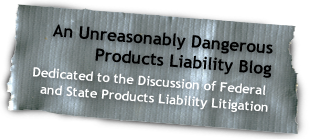
Today, Abnormal Use continues its series, “Abnormal Interviews,” in which this site will conduct interviews with law professors, practitioners and makers of legal themed popular culture. For the latest installment, we turn to Daniel Hartis, author of the new book, Beer Lover’s The Carolinas, a handy and thorough guide to breweries, beer pubs, and other great beer joints in North and South Carolina. As we have previously noted, we here at Abnormal Use enjoy and remain proud of the beer scene in the Carolinas. Plus, we interviewed Daniel once before, shortly after the publication of his first book, Charlotte Beer: A History of Brewing In The Queen City. (You can revisit that interviewed – published not so long ago in July of 2013 – here.). When we learned that Daniel had written a new book, we knew, of course, that we’d request another interview. So, once again, he was kind enough to submit to an email interview, which appears below.
ABNORMAL USE: This is a book that likely could not have been written five or ten years ago. What do you feel has been the most exciting change in the Carolinas that has allowed the craft beer industry to flourish?
DANIEL HARTIS: There are many things that you could point to, but if I had to choose one, I’d credit North Carolina’s Pop the Cap movement. This bill passed in 2005 and allowed breweries to brew beers with an ABV as high as 15 percent, whereas before, they were limited to brewing beers at six-percent or under. Can you imagine how difficult it was to brew entire styles of beer, like high-gravity Belgian styles, imperial stouts or double IPAs? It wasn’t even possible in this state before Pop the Cap passed.
South Carolina passed similar legislation, as well, and two recent pieces of legislation – the Pint Bill and the Stone Law – have also been critical in allowing for continued growth in that state. Before the Pint Bill’s passage, you couldn’t go have a pint at a brewery – you had to go on a tour and have small samples. With its passage in 2013, SC breweries became destinations where you could visit to enjoy a maximum of four pints. In that same vein, the Stone Law – which passed earlier this year in an effort to lure Stone Brewing’s East Coast brewery to the state – allowed brewpubs to distribute their product and breweries to serve food. Like the Pint Bill, breweries have responded to these changes almost immediately, with several doing whatever they need to take advantage of the increased freedoms.
AU: What plans, if any, do you have to update the book as new breweries, bottle shops, and brewpubs continue to open throughout North and South Carolina?
DH: While I haven’t spoken to the publisher about it yet, I do know that they like to do new versions of books in the Beer Lover’s series every two to three years, depending on the market. The beer scene in the Carolinas is growing at such a tremendous rate that I’m sure they will want to update it in a year or two.
AU: How is it different for you when you visit a brewery or brewpub as a writer and reviewer than as a regular patron?
DH: As a writer, I make it a point to take note of a little more than I would as a regular patron, in which case I might be content to simply sit and enjoy a beer. Knowing that I’m writing for an audience who might not always share my taste in beer, I try as many of the brewery’s beers as possible (it’s a tough job, I know). Then instead of casting judgment on the beers by saying they are good or bad, I try to describe what I’m tasting and let the readers decide if the beer sounds good to them. Taste is subjective, after all. Fortunately the Carolinas are home to many great breweries producing a wide variety of styles, so there really is something for everyone. Aside from trying to be objective about beers, I try to take notes on the ambiance and environment of the places. Beer is the reason you go to these breweries, but at the same time, it’s only a part of the experience. I hope through my descriptions to help readers visualize these breweries and give them a taste of what they can expect. When I could, I would speak with the owners and brewers to get more information: what’s their philosophy on brewing, what’s their history, that sort of thing.
AU: There are many South Carolina beers currently unavailable for purchase in North Carolina, and vice versa. Why is that, and what is the biggest challenge faced by brewers who wish to distribute their beers in a neighbor state?
DH: I think it just comes down to the additional costs with having to distribute in another state – not to mention many of these breweries simply do not produce enough beer to get too far out of their own city, let alone state. That being said, I do think we’ll see breweries making the jump more frequently now, especially after building enough of a following in their respective areas. I heard recently that Lancaster’s Benford Brewing is looking to make the jump into North Carolina soon, and I think we’ll see other SC brewers following suit as well. Likewise, some North Carolina brewers are moving south as well (Green Man, The Olde Mecklenburg Brewery and NoDa Brewing are just a few that have recently started distributing in South Carolina).
AU: Besides your own website, Charlotte Beer, what sites should readers visit to keep current on issues affecting the craft beer industry in the Carolinas?
DH: With the growing interest in craft beer and breweries opening up seemingly every other week, many publications around the Carolinas are devoting more coverage to craft beer. Tony Kiss is reporting full-time on beer for the Asheville Citizen-Times and The Greenville News. You can also find Thom O’Hearn doing good work in Asheville at the Mountain Xpress. Here in Charlotte, Matt McKenzie does a good job covering the local beer scene with Charlotte Magazine’s On Tap blog, and Jonathan Wells has taken over as beer writer at Creative Loafing. Those are more of the traditional outlets, but there’s a lot of good beer coverage in blogs as well. The NC Beer Guys cover news, events and brewery happenings pretty exhaustively in North Carolina. In South Carolina, you have to follow Beer of SC and Drink. Blog. Repeat.
AU: What was the biggest challenge in attempting to visit and describe all of the breweries and brewpubs in North and South Carolina?
DH: I think it was just that: attempting to visit all of the breweries. I wanted the book to be as authentic as possible, meaning I wanted to visit as many places as humanly possible in a very short timespan. (I had just three months to write the book). I didn’t want to comb through things that had already been written; I wanted to visit these places firsthand to get my own impressions and observations, and I also wanted to make sure we got high-quality photos where possible (Eric Gaddy of Casting Shadows Photography did some excellent work in that regard). I’m so used to writing online and being able to update things on the fly, that it killed me to know that some breweries would open up after the book went to print. I knew that it would impossible to keep a printed product completely up-to-date, but I still agonized over it. I am proud to say that we visited several breweries in planning at the time that I knew would open up between the time I submitted the manuscript and the time the book was printed. Overall, I’m proud with how comprehensive the book is and look forward to adding even more breweries whenever the time comes to do a second edition.
BONUS QUESTIONS:
AU: What was your first craft beer, and what was it about that beer that made you starting thinking about beer differently?
DH: I guess it depends on your definition of craft beer. I really hated “big beer” and thought I didn’t like beer period until I started drinking Yuengling, which I enjoyed. When I moved to Asheville, NC to go to school, some friends and I stopped by Asheville Pizza. I told the waitress I’d try whatever their most popular beer is, and she brought back Shiva IPA. I’d like to tell you it opened up a whole new world for me, but I thought it was disgusting and abrasively bitter. My palate just wasn’t ready for it at the time, even though today I think it’s a great beer. Maybe a year or so later, UNC Asheville’s school paper asked me to write about the town’s microbreweries. This is where I got hooked. The one beer in particular that did it was Highland Brewing’s Oatmeal Porter, which I enjoy to this day. I’d never had a dark beer before then, and so it really opened up my eyes and sent me on my craft beer journey. (More on these earlier experiences, as well as the article I wrote for UNC Asheville’s Blue Banner, can be found in “How I Came to Drink (and Write About) Craft Beer.”)
AU: If you could dispel any misconception about the craft beer industry, what would it be?
DH: There are lots of misconceptions about craft beer. Some that I encounter most often are that craft beer is too bitter or too heavy. That’s painting with a broad brush. The truth of the matter is that there is no more diverse a beverage than beer. From hoppy to malty to savory to sweet to sour to roasty to light – these are just a handful of the seemingly endless adjectives that we use to describe beer. I sincerely believe there is a beer out there for every palate.
AU: Cans or bottles?
DH: Cans have become trendy these days, but for good reason: they protect against light and oxygen better than bottles, and can be taken places where glass cannot. All things being equal I’ll say cans, though I’d never begrudge a good beer in a bottle.
BIOGRAPHY: Daniel Hartis is the founder of CharlotteBeer.com and the author of Charlotte Beer: A History of Brewing in the Queen City. His latest book, Beer Lover’s The Carolinas, was published by the Globe Pequot Press earlier this year. When he’s not writing about beer, he enjoys spending time with his wife and two children. You can follow him on Twitter at @CharlotteBeer.


















